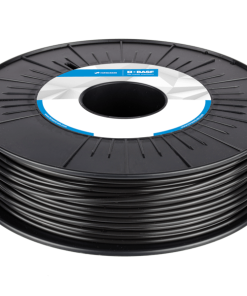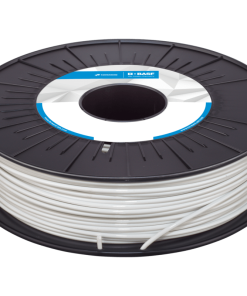BCN3D PP GF30 Filament – 700g – Black BCN3D
$ 159,95 $ 63,98
Overview
PP GF30 (Polypropylene 30% glass fibre) is a composite filament, filled with glass fibre for chemically resistant, lightweight and dimensionally stable parts. It is amongst the most used filled materials in the automotive industry, characterised by a long service life and able to resist to all weather conditions.
Compatibility: Find out the BCN3D printers and filaments compatibility
Applications
- Parts exposed to aggressive and humid environments or in contact with chemicals.
- Rigid structural elements such as brackets, bars, shafts and frames.
- Automotive and aerospace industry.


BCN3D Filaments
Industrial-grade materials manufactured by BASF and Mitsubishi Chemical and designed to deliver outstanding results for BCN3D printers.


Properties
- Combination of excellent chemical resistance, strength and stiffness.
- Lightweight.
- Water and UV resistant.
- Resistant to aggressive environments and high temperature, up to 120 ºC.
Datasheets:
Technical Information

Chemical resistance
Due to its chemical composition, each thermoplastic polymer is characterised by a different resistance to the different classes of chemicals, including apparently harmless substances such as food and cleaning products.

How to Print
Printer Settings
|
Extruder temp. 230° C – 250° C |
Bed temp. 80° C |
||
|
Cooling fan 50% |
Speed 30-80mm/s |
||
|
Min. layer height 0.2-0.4mm |
For BCN3D Stratos users:
Get a proper printing profile for PP GF30 using the ones integrated into the BCN3D Stratos.
Bed adhesion:
To ensure good bed adhesion use Magigoo Pro PPGF.
Recommendations:
Compatible with BCN3D Epsilon when paired with the Hotend X.
Gallery

Hose nozzle
Parts printed in PP GF30 withstand the harshest environments, keeping their shape and functionality


Climbing Dams
When printing structural parts, choose PP GF30 for greatest durability and weather resistance.

Resistance to aggressive environments, humidity and high pressure
PP GF30 is ideal to manufacture rigid and strong parts used in aggressive environments.


Product design end-use parts
The use of PPGF GF30 was employed for the manufacturing of the fender; one of the pieces most prone to breaking from shocks and frictions. The material, capable of withstanding such movements, is also beneficial because it is lighter than PAHT and the fender is the largest piece.
Professional packing and fast shipping
Due to our longstanding partnership with UPS FedEx DHL and other major global carriers, we are able provide a range of shipping options. Our warehouse staff is highly trained to package your goods exactly as per the specifications we offer. Before shipping the goods are carefully inspected and secured. Everyday we deliver thousands of packages to customers from all over the world. This is a testament to our commitment to be the largest online retailer worldwide. The warehouses and centers for distribution are situated in Europe and the USA.
Orders with more than one item are given processing time for each item.
Before shipping, we will conduct a thorough inspection of the items you've ordered. Currently, most orders are shipped within 48-hours. Expected delivery time is between 3 and 7 days.
Returns
The stock is dynamic and we do not fully manage it because of the fact that multiple stakeholders are involved, including our factory and warehouse. The actual levels of stock can change at any moment. It's possible that the stock may run out after your order has been placed.
The policy is 30 days. If you haven't received the product within 30 days, we are not able to issue a refund or an exchange.
For your item to be returned, it must be unopened and in the same state as you received it in. It must also be in the original packaging.
Related products
Filament
Filament
Filament
Filament
Filament





































